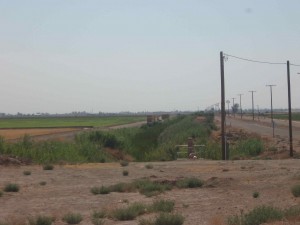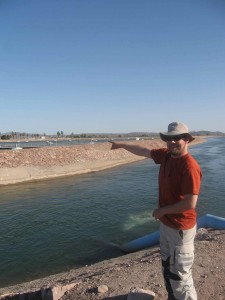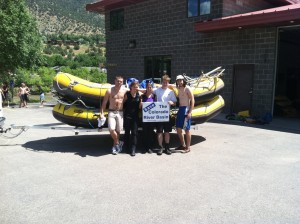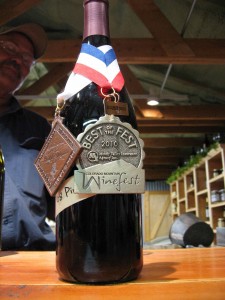After meeting with BLM officials in Lake Havasu City on Friday morning the Rockies Research Team began the trek back to Colorado Springs. Our destination for that evening was the South Rim of the Grand Canyon and the campground there. Rising in elevation out of the desert, we quickly found ourselves back in the Kaibab National Forest that we had visited a week earlier, except across the Canyon on the North Rim. Passing into the National Park we found that the South Rim was truly the tourist destination in the Park rather than the more remote North Rim. Throngs of visitors walked along the fenced pathways of the rim peering over the edge as various languages from around the world were heard. We progressed over to the Mather Campground for the night, which seemed more of a small tent city than the traditional campground full of cars and trailers with license plates from across the country. We set up for the night and began to reminisce on the long journey behind us, and excitedly anticipate the long haul ahead of us back to CC.
The next morning was another early one as we had to cross the rest of Arizona to reach the Navajo Reservation to meet with officials regarding tribal water management and the greater topic of Native American water rights. In Ft. Defiance, AZ we met with two members of the Navajo Nation. Bidtah Becker is an attorney with the Navajo Department of Justice and Jason John is a hydrologist with the Navajo Department of Water Resources. The Navajo Nation spans across Arizona, Utah and New Mexico, creating myriad jurisdictional issues (made worse by allotment: see Blood Struggle by Charles Wilkinson for more information) Since Arizona and New Mexico do not have water courts like we do in Colorado, the process for quantifying the Native American water rights can be long, arduous and politically-driven. The Navajo Nation and the State of New Mexico recently came to an agreement to quantify the Navajo water rights in the Upper Colorado River Basin in New Mexico (San Juan River)—a process largely driven by Senator Bingaman (D-N.M.). The Navajo are still pursuing the quantification of their rights in other basins and States.
Bidtah stated that the greatest threat to the Navajo Nation is poverty. Though the Navajo have extensive coal deposits, they are not connected to major rail lines, thereby limiting the market of the coal. Without the money to build infrastructure or fight expensive legal battles over water rights, the Navajo Nation faces an uncertain future when it comes to water and by extension, their economy.
After the meeting we started our last push towards home heading north through Farmington, NM and up into Colorado crossing the San Luis Valley and finally reaching the Front Range. Arriving at 1:30AM we were home after our long tour of the Colorado River Basin.
Our research for the summer was undoubtedly greatly enhanced by our travels throughout the basin; while research in the lab can open one to the issues of the region, merely staying within the confines of books and reports limits the perspectives to which you are introduced. Getting out into the basin and meeting with the stakeholders whose everyday lives are affected by the Colorado River brought a new dimension to this summer’s project. Whether it be witnessing the flows of the Gunnison through the Black Canyon (flows that are now protected) or the conservation efforts underway in Las Vegas, or engaging with the farmer committed to feeding people in the U.S. and around the world, or meeting with those whose voices haven’t traditionally been heard in the calculus of Colorado River water, we gained new perspectives regarding the multitude of issues facing the Basin. Now we must compile all of the data and research recorded during our trip, and with recognition of these new perspectives begin to work on our annual Report Card. With 3 weeks of summer research left we certainly have a tall task, but nothing that we can’t accomplish.




